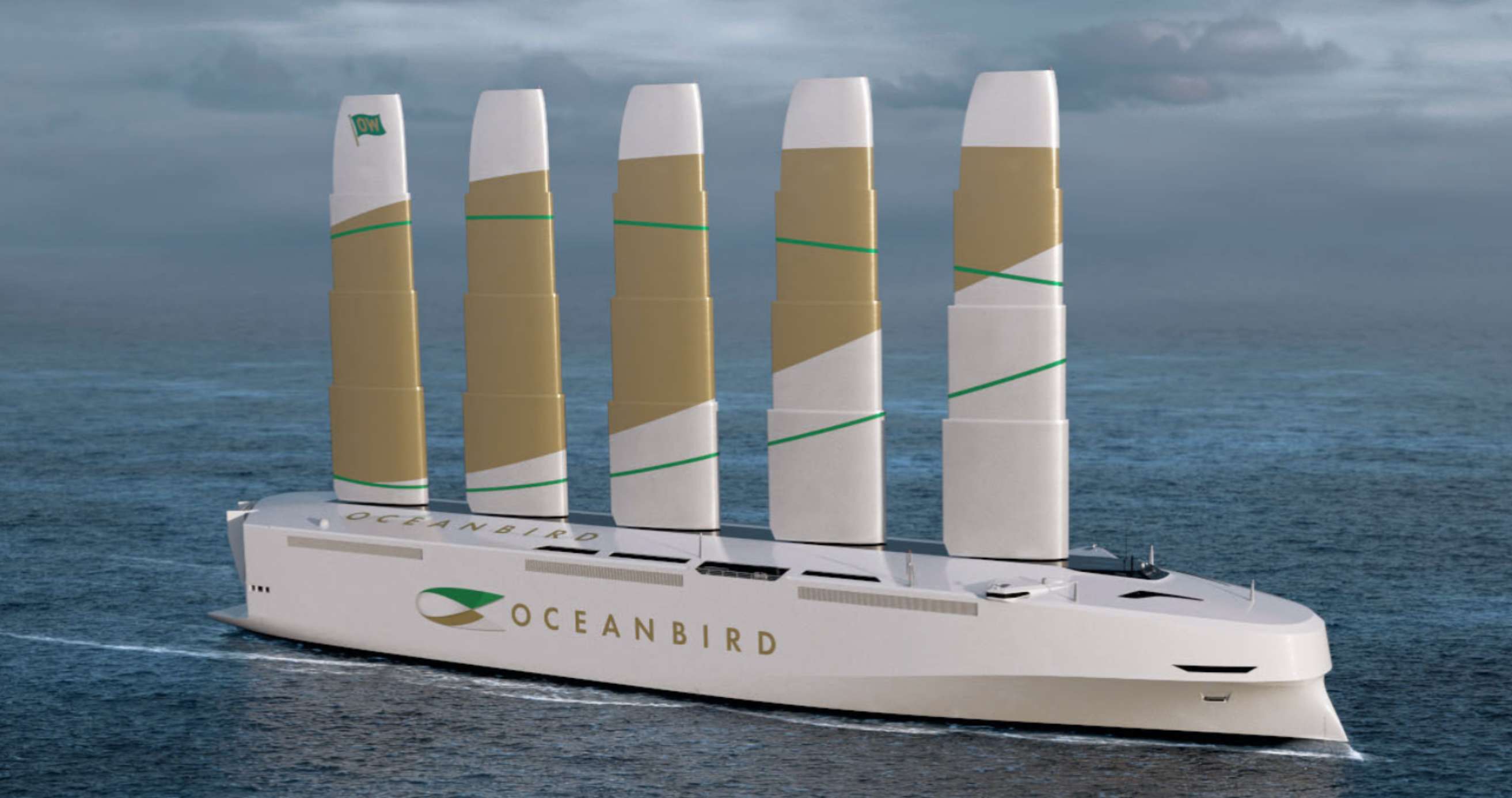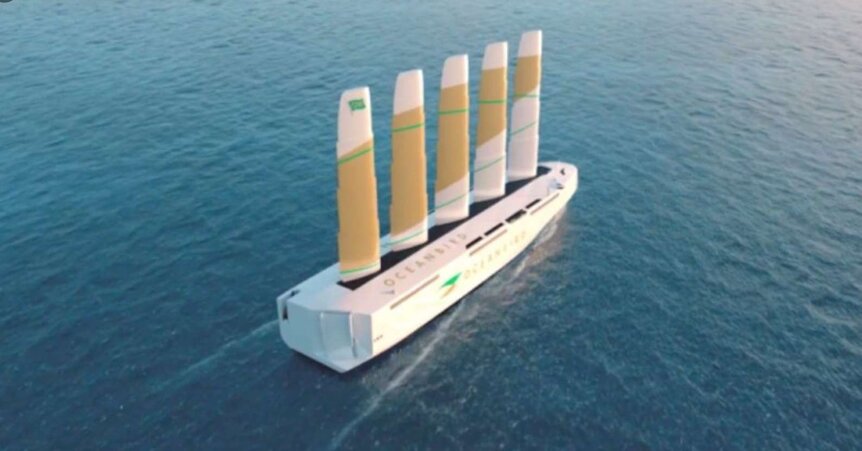Create a free profile to get unlimited access to exclusive videos, sweepstakes, and more!
Titanic transatlantic cargo ship is actually a super-sized sailboat with skyscraper-style sails

Sailing across the seven seas with its soaring complement of five elegant sail-fins, a new transatlantic cargo vessel called the Oceanbird will endeavor to harness the mighty power of the wind to provide its sustainable green energy propulsion.
To create this majestic ocean-going ship, a consortium of Swedish corporations including Stockholm's KTH Royal Institute of Technology, respected maritime consultancy firm SSPA, and the structural engineers and ship designers at Wallenius Marine is bringing to life the freshly decked-out wind Powered Car Carrier, AKA the wPCC. Plans are to launch their behemoth sailboat into a stiff breeze sometime in 2024 or 2025.
This epic transatlantic ship offers cargo hauling services for up to 7,000 vehicles while reducing carbon emissions for the oceanic crossing by 90 percent. One trade-off for its green energy signature is that the lengthy Atlantic journey will be a bit slower, taking nearly twice as long as conventional container vessels, which plow through the waves to their destination in one week's time.
"It is a technically challenging project," Wallenius Marine developers explained. "The rigging and hull will work together as a single unit to harness the wind in the most efficient way. The hull has been designed for a large sailing cargo vessel that will transport heavy cargo over long distances for long periods of time. It is a mix of aeronautic and shipbuilding technology. We evaluate performance and safety by using a combination of computer simulations and physical experiments."
The graceful five-winged Oceanbird measures approximately 656 feet in length and 131 feet wide, with a total displacement of roughly 35,273 tons.
Its arrangement of 260-foot-tall wind-catching fins, sculpted like aircraft wings, is able to telescope down to 45 feet for low-hanging bridges or when severe storms require it for safety precautions. To maneuver carefully around narrow harbors and crowded docking ports, the carrier will deploy an array of traditional electric motors.
A successful first sea trial of a wPCC model occurred back in June, when 11 KTH naval design students placed the mini prototype in the water to determine the center of gravity and test the hull speed.
Roughly three percent of today’s carbon dioxide emissions are caused by the global shipping industry, which represents a fleet of 90,000 ships that remarkably account for 90 percent of all trade commerce on Earth. Currently the planet's armada of massive car-carrying vessels numbers over 450 individual transporters that generate 44 tons of fossil fuel every day.
While the Oceanbird will only make a small dent in the ongoing climate change crisis, this is a serious step in the right direction to help the industry's heavy carbon footprint problems.
It's a revolutionary concept on a grand scale, and one that will hopefully make resounding wakes in the wind-powered drive for cleaner propulsion solutions and even potentially trickle down into the luxury cruise lines as well.
















